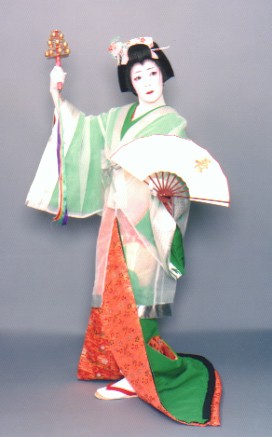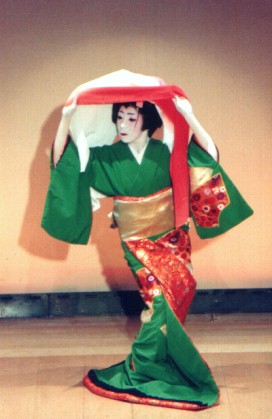Traditional Japanese Dance in Paris
with Juju Alishina
Video
- Performance May 14th 2011 at the Museum Albert-Kahn
Japanese dance is based on incantations, such as the invocation of departed
spirits and prayers to grant rest for their souls. This type of dance
is composed of the following three elements:
MAÏ, which means to turn around
ODRI, which means to jump
FURI, which means to mimic gestures representing everyday life or a social condition.
These definitions of maÏ, odori et furi correspond to the original meaning. Today, they are all used to reflect the character of a choreography,
Traditional Japanese dance was perfected in plays of Noh, Kyogen, and Kabuki. The Kabuki dances were mostly developed during the Edo period in Tokyo in the 17th century.
Among the Kabuki actors, the best dancers or choreographers founded their own schools. Women could learn dance there, whereas Kabuki was and remains a masculine universe.
The schools follow a pyramidal structure: "Natori" (professional dance diploma) is the first level, next comes the "Shihan" (teaching diploma). The "Iemoto" (honorific title) is held by a single person, the founder of the school.
Juju Alishina was trained in the "Fujiwaka" school and passed the Natori and Shihan levels. She founded her school of dance and creates and teaches in France since 1998.
© 2001-2010 All rights reserved by Cie NUBA

